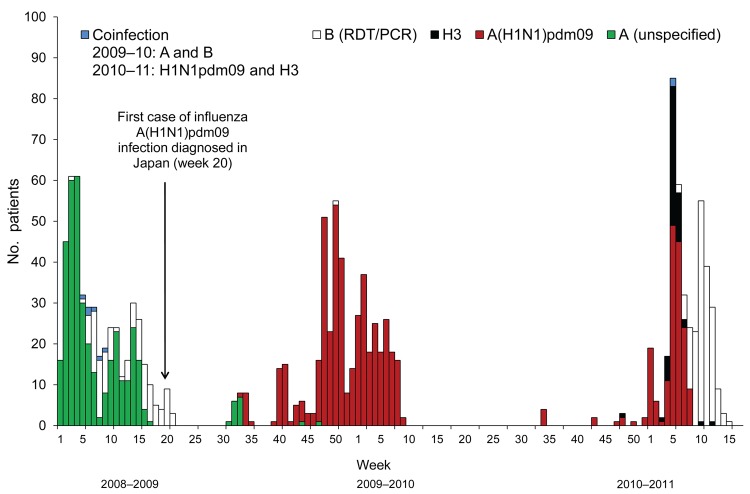Figure 1.
Cases of influenza and influenza-like illnesses on Izu-Oshima Island, Japan, from week 1 of 2009 through week 17 of 2011. The number of influenza cases and influenza-like illnesses are plotted weekly from the disease onset. Influenza cases were defined as illnesses diagnosed by a rapid test combined with a reverse transcription nested PCR (RT-nPCR) or by a rapid diagnostic test (RDT) alone, during the retrospective period (unspecified). Influenza-like illnesses were defined as cases for which influenza was ruled out by negative RT-nPCR or cases for which influenza was ruled out by RDT results and further tests were not performed. Multiple visits within 7 days were counted as a single case. Disease onset was defined by the date when the patient first reported fever or upper respiratory symptoms. The disease onset for the case that had no date in the clinical records was defined as the day before the first clinical visit according to the median day of visit from the available study data. A and B, co-infection, cases diagnosed by RDT. B (RDT/PCR), cases diagnosed by a RDT or RT-nPCR. A(H1N1)pdm09 and H3, co-infection cases with 2 virus subtypes confirmed by RT-nPCR. Influenza seasons were defined as follows: week 1–30 of 2009 was the 2008–09 prepandemic season, week 31 of 2009–week 33 of 2010 was the 2009–10 pandemic season, and week 34 of 2010–week 17 of 2011 was the 2010–11 postpandemic season.

